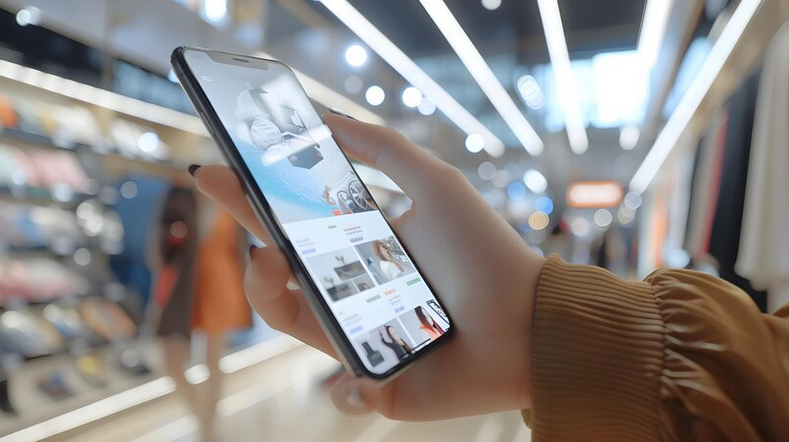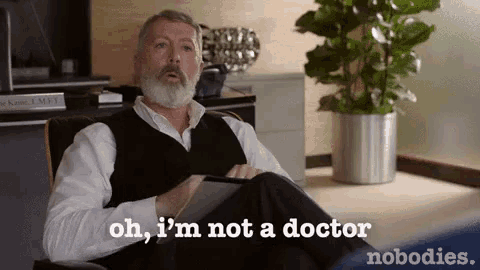13 psychological tricks that will help you become a master at communicating with clients!
-
Vladislav Tsymbal
Copywriter Elbuz
Fatigue was affecting him more and more. I could barely keep my eyes open, conversations with clients turned into a routine. What if there is another, more effective communication strategy? One small psychological trick... and now the client is ready to cooperate. Each of the techniques described below helps reduce barriers and build trust, which ultimately leads to more successful transactions and satisfied clients. Put them into practice and you will be surprised how much easier it becomes to negotiate and conclude contracts.

Glossary
- 🌟 You-statement: A customer-focused phrase that emphasizes the importance of the customer. For example, “You can see for yourself...”
- 💬 We-statement: Using the pronoun “we” to create a sense of collaboration. For example, “We can do this together...”
- 🎯 Affirmative Behavior: A behavior that implies that the client has already made a positive decision. For example, “When you receive our product...”
- 🤝 Customer Friend: Having a supportive and friendly attitude towards the customer to establish a trusting relationship.
- 🎭 Customizing: Imitating the client's communication style and behavior to build trust.
- 🗣️ Personal Conversation: Incorporate personal topics and questions to create a closer connection.
- 🏷️ Calling by name: Frequently using the client's name in conversation to create a personalized approach.
- 🎉 Remembering dates: Remember important dates and holidays of the client and congratulate him.
- 👂 Active Listening: Listening carefully and engagedly to the client, demonstrating interest and understanding.
- 🧠 Socratic Method: Consistently asking questions to lead the client to the desired solution.
- 📚 Expert Behavior: Positioning yourself as an expert in your field.
- 🪜 The principle of large requests: Start with large requests so that subsequent, smaller ones are easier to accept by the client.
- 📜 Quotes and Proverbs: Using famous expressions for meaning and persuasion.
Technique No. 1: Using “You Statements” in Communication with Clients
I Many times I had the opportunity to verify the effectiveness of “you statements” when interacting with clients. This technique significantly increases customer satisfaction and contributes to the successful completion of the transaction. Questions and statements formulated with an emphasis on the client's interests and benefits guide the conversation in the right direction and create an atmosphere of trust.

Benefits of You Statements
One of the important aspects of You Statements is that they help focus on the client's needs. For example, instead of saying, “I'm offering you this insurance because it's the best selling,” I prefer to say, “This insurance will give you the most protection and peace of mind.” This way, the customer gets a clear picture of how the product or service will solve their problems or satisfy their needs.
Real example
In one of my projects, I worked with an online store that sold clothes. We changed the approach to describing products on the website: instead of standard marketing phrases like “New collection, hurry up to buy”, we used “you-statements”: “In this dress you will look chic at any event.” The results were not long in coming. We noticed that conversions from product cards to cart increased by 25%.

Practical Tips
Now I want to share some practical tips that will help you successfully apply "you-statements":
- 🛍 Use emotional connection: Talk about how the product will improve the customer's life. For example, “This sofa will become the center of your coziness and comfort.”
- 🖼 Keep it simple: The simpler the words, the better. Compare: “This phone model has unique technical characteristics” and “With this phone you will be able to take brighter photos.”
- 💡 Focus on specific benefits: For example, instead of “This cream contains vitamin E,” it is better to say “This cream will help your skin stay young and firm.”
Bottom Line
I believe that effective use of “you statements” will significantly improve your sales success and customer satisfaction. Don't forget: customers want to know what specific benefits await them from purchasing your product. Make sure every argument you make is based on the customer's needs and interests, and you'll see your interactions become more personalized and successful.

Efficiency table
| Trick | Helpful Tips | Mistakes | Best Practices |
|---|---|---|---|
| "You-statements" | Talk about the client's benefits, use simple words, specify the benefits | Talk only about product features, use complex terms | Use emotional connection, focus on customer needs |
Using this approach will make your sales more successful and allow you to better understand your customers' needs.
There is no doubt that the "you-statements" approach is a win-win for everyone. See for yourself, try it in your business and enjoy the results. For additional information and further recommendations, I recommend familiarizing yourself with the difference between a website and a landing page.
Technique #2: The "We" Effect
Turning customers into allies is an important aspect of effective selling. Using the “we” statement in communication allows you to create a feeling of unity with the client. One day, while working with a large customer, I discovered the power of this technique. Instead of the traditional opposition between “I” and “you,” I gave preference to general formulas that automatically brought us closer to clients and helped build trusting relationships.
.png)
I believe that the use of the pronoun “we” contributed to my clients beginning to perceive our interests as common. For example, when I said “let's figure out how we can improve your project,” it sounded much more attractive than “I will help you solve your problem.” This magical “we” brings together, unites the manager and the client with a common idea, and contributes to the creation of an alliance based on mutual cooperation.
Examples from practice
Here is an interesting case from my practice: one of the clients repeatedly doubted the advisability of purchasing non-standard equipment. Instead of continuing to convince him on my behalf, I said, “Let's see how we can find the best solution for you.” Internal assistance and support was well received and the deal went through.
Why it matters
Consistency in communication is becoming one of the key components of success. That is why:
- 😊 Goals are achieved more effectively. Clients feel supported.
- 😊 Increases trust. The psychological effect of unity promotes trust.
- 😊 Increased satisfaction. Clients remain satisfied.
My experience has been that joining forces with clients helps them feel like their concerns are truly important and that I'm not just trying to sell something, but that I'm actually interested in solving them. tasks. One of the most striking examples was the situation when I used “we statements” in a telephone speech, which greatly influenced the success of the negotiations.

“Together we will find the best way,” such words create the feeling that you and the client are working together one goal.
Results and recommendations
🟢 Useful:
- Use "we-statements".
- Make general plans and decisions.
- Create an atmosphere of cooperation.
🔴 Not useful:
- Contrast "I" and " You".
- Focus on differences in goals.
- It’s primitive to impose your opinion.
To sum it up, I can assure you that using “we statements” significantly increases the success of negotiations and transactions. I encourage you to try this method and see for yourself how effective it is.

Trick #3: Act as if the client has already made a decision
In the world of customer interaction, one thing remains important - act as if the customer has already made a purchasing decision. When I first put this method into practice, the results were simply amazing. For example, in a project to promote an online store for animals, instead of the usual questions “Will you make a purchase?” I immediately began to clarify payment and delivery options. This approach creates the illusion of a decision already made, which in turn facilitates the transaction process.
When it comes to applying this strategy to landing pages, every word needs to be targeted and sell. Instead of standard headings like “Product Benefits” or “Cost,” use language that implies the customer is already making a choice. For example:
🟢 “I already want it! How to order?"
🟢 “I'll take it! How to pay?"
This approach is much more effective than typical intent questions.

How it works in practice
Real life story: When I was working on integrating this technique for one of our clients, we were solving the problem of increasing conversion when ordering online courses. Instead of asking “Interested in purchasing?”, we immediately offered payment options and prepayment bonuses. This seemingly innocent technique significantly increased sales, as customers felt that the decision had already been made.
Practical applications include:
📌 No purchase questions: Eliminate questions regarding the customer's desire to buy the product .
📌 Focus on details: Talk about the features of the product or service, payment methods, delivery times, etc.
📌 Self-confidence: Let the client know that you are absolutely confident in their decision.

Tips table:
| What to do | What not to do |
|---|---|
| Talk about payment and delivery options | Ask if the customer will make a purchase |
| Confidently use decision phrases | Use open-ended questions |
| Present the product or service as if it had already been purchased | Doubt the client's intentions |
Trick #4: Become Your Client's Friend
I believe that one of the most effective ways to communicate with clients is to truly consider them your friend, at least for a moment. instant. This approach has served me well in a variety of situations, be it a strict boss, a critical teacher, or a capricious client. Let me tell you how I applied this technique and what results it brought.

Here's a powerful mental trick: imagine the person on the other side of the monitor or phone as good a friend who needs help. This shift in thinking changes everything. Imagine telling a friend about your product. Obviously, you won't be using any publicity stunts; instead, you will be honest, clear and transparent. This is how I approach interacting with clients.
For example, during a particularly difficult negotiation with a client questioning our pricing model, I decided to frame the topic as if I were talking to a friend over coffee. I said, "Let's figure this out together so I can show you why this option is beneficial for both of us." This honest and friendly approach not only eased the client's concerns, but also built a long-term relationship based on trust.
Strategies for Effective Communication
🛠 Use simple words and expressions . Avoid complex terms and bureaucratic phrases. I advise you to imagine that you are explaining the essence of the issue to a child. This approach not only makes it easier to understand, but also shows your sincerity.
🛠 Listen actively to. Customers feel valued when they are listened to carefully. During a conversation, nod, ask clarification questions, and from time to time summarize what the other person said to show your interest.
🛠 Show empathy and care. I often expressed understanding and sympathy for clients' problems, which helped establish friendly rapport. For example: “I understand that this issue bothers you. Let's find the best solution together.”
🛠 Use humor. Light humor (without going overboard) can defuse a tense atmosphere and win over the client. It is important to remember that, first of all, your humor should be appropriate and understandable for all participants in the communication.
Case studies

🧩 Situation: The customer was outraged by the defective product and demanded a refund. My approach: I pretended that this client was my friend and said, “You're right, this is a very unpleasant situation. Let me deal with this as soon as possible so you don’t have to worry.” Result: The client appreciated the sincerity and willingness to help. Instead of returning it, he agreed to an exchange and subsequently became our regular customer.
🧩 Situation: Negotiations with a potential partner have reached a dead end due to disagreements over the terms of the contract. My approach: I put myself in my partner's shoes and started the conversation with a friendly question: “What are your top priorities to understand how we can move forward together?” Result: The dialogue took place in a constructive manner, and we were able to find a compromise solution that suited both parties.
I strongly encourage you to consider these approaches in your practice, as they help not only solve short-term problems, but also build strong, long-term relationships with clients.

Summary: do's and don'ts
| Useful tips | What to avoid |
|---|---|
| ✅ Be genuinely interested in the client's opinion | ❌ Use complex terms that can scare off |
| ✅ Show empathy and caring | ❌ Be overly formal and dry |
| ✅ Incorporate mild humor into conversations | ❌ Ignore customer complaints and requests |
| ✅ Use simple and understandable words | ❌ Apply aggressive selling and manipulative techniques |
I can confidently say that adopting a “customer friendly” approach has been one of the most important shifts in my career. These strategies not only help in solving problems immediately, but also in establishing trust and loyalty, which are invaluable to any business.
Technique #5: Adapt to the client
I believe that one of the most effective methods of communicating with a client is This is the ability to adapt to his communication style. It took me time and practice, but the results were worth it. How did I do this in practice?
Take a closer look at the client's speech style
The first time I used this technique, I immediately noticed how much the dynamics of the conversation changed. If the client uses slang, I might also throw in a few words to show him that we're on the same page. If the client preferred formal communication, I tried not to deviate from the chosen tone.

But that was not all. In online dialogue, for example, I paid attention to the use of emoticons. 😄 If the client actively used them in correspondence, I did the same. This created a warmer and friendlier atmosphere.
Telephone conversations
Telephone calls turned out to be an even more interesting area for using this technique. I soon realized that in telephone speech the client often uses filler words such as “uh-uh” or “well.” I tried not to be shy and sometimes repeated the same ones. This made the conversation feel natural and helped connect on a deep level.
Pace and manner of communication
The pace of speech also played a role. If the client spoke quickly, I tried to maintain the same rhythm. If I weighed each word slowly and carefully, I adjusted to that pace. The results were impressive: small details, such as speaking speed or communication style, had a huge impact on the outcome of communication.

Real life example: Once, in a conversation with a business client who spoke slowly and with emphasis, I also began to speak slowly with emphasis respect in every word. This client then became not only a regular customer, but also brought in several new partners. I believe this approach helped me build trust.
Little tricks
If this technique suddenly didn’t work, I tried not to attach much importance to it and looked for new clues. Surely something will work, right?
🔍 Key points I considered:
- 📚 Tone of conversation
- 👂 Filler words
- 🚀 Speech rate
- 🤗 Using emoticons
Summary
I am confident that anyone can master this technique. It works on a subconscious level and helps create a sense of community between you and the client. Don't forget to listen to the client and adapt to his style of communication - this is your key to success!
| Useful tips | What to avoid |
|---|---|
| 📚 Follow the client's tone | 🚫 Ignore the client's emotions |
| 👂 Repeat filler words | 🚫 Interrupt the client |
| 🚀 Maintain the pace of speech | 🚫 Use too different communication styles |

Technique #6: Maintain Personal Communication
When I communicate with a client, I always try to create an atmosphere of trust and comfortable communication . I can confidently say that one of the most effective techniques is to start a personal conversation. Here's how I did it in my practice.
I remember a time when a client contacted me, interested in pet products in an online store. I immediately realized that we had a common topic of conversation - pets, and decided to start a conversation on that basis. First of all, I asked what his furry friend's name was and what his habits were. The client was happy to talk about it, relaxed and felt more at ease.
I was able to find out in more detail what exactly the client was looking for. This greatly simplified the task and helped to offer him the most suitable products. As a result, he was satisfied with our communication and bought what he really needed.

Subtle secrets of personal conversation
🤝 Talk about hobbies: When a customer is interested in craft supplies, it's likely that they have something to say about their hobbies. I always show interest in his hobbies, this helps to establish contact and build trust.
👨👩👧👦 Ask about the family: Working with products for children, I repeatedly asked clients questions about their children: age, interests and preferences. This approach helps to identify needs and offer the most suitable products.
🏢 Learn about the job: In conversations about work, I try to pay attention to how the client is going through his day and what difficulties he faces. This allows you to find common ground and establish deeper communication.
Taboo topics
I have always avoided questions about politics, religion and health, unless it relates to the profile of our interaction, for example, in the case of online pharmacies . Questions that are too personal can cause discomfort and destroy any connections that have been made.
Work with CRM
I recorded each conversation in database using a CRM system. This allows me to store information about clients so that when I contact them again, I remember their interests and preferences. This way I can again establish personal and warm contact.

Personal communication and attention to detail create strong, trusting connections with clients.
| Useful to do | Not worth doing |
|---|---|
| 🤝 Be interested in the client's hobbies and interests | ❌ Ask questions about politics and religious beliefs |
| 👨👩👧👦 Ask about family and children | ❌ Cross the boundaries of too personal questions |
| 🏢 Show interest in the client's work and professional life | ❌ Ignore the importance of personal communication |
| 📋 Record all information in CRM | ❌ Refuse to use the database |
I believe that the topic of personal communication is extremely important to successful interactions with clients. By offering advice based on my experience, I hope that you will find it useful and can apply it to your practice.
Technique #7: Mentioning the client by name
Using the client's name in communication is a simple but extremely effective a psychological technique that I have used in my practice for many years. This approach creates a feeling of personalized attention and respect for the client, which has a positive effect on the perception of the service or product and on the relationship with the company as a whole.
Personal experience and examples of use
When I communicate with clients for the first time, I always try to ask their name and write it down in the system. It is important to clarify exactly how the client prefers to be addressed: simply by name or by name and patronymic. This is especially true for young people who may avoid formal forms of communication.
❗ Be sure to specify how exactly to address - it can be just a first name or a first and patronymic. If you do not perform this simple action, you can easily find yourself in an awkward situation when the client does not like your too official or, conversely, too familiar tone.

Real life examples
📌 Auto parts store situation: In one of my projects in the field of online auto parts stores, I was faced with the fact that repeat customers wanted to feel that they were remembered. By implementing a system that automatically displayed the customer's name the next time they contacted us, we saw a significant improvement in customer satisfaction.
🔍 Stats: According to CRM research from SuperOffice, using a customer name can increase customer satisfaction by 27%.
Importance and Benefits
Using the client's name in communication not only increases his trust in you, but also helps create an emotional connection. Customers are much more likely to return and become loyal where they are remembered and valued as individuals.
💡 Benefits of:
- 😊 Increased sympathy and trust.
- 🔄 Increased likelihood of repeat purchases.
- 📈 Improved overall satisfaction.

Recommendations and tips
✅ Practical recommendations:
- ❗ Write down the client's name the first time you contact.
- ❓ Specify's handling preferences.
- 🔄 Use automation to display name on repeat purchases.
The process of selecting the appropriate contact type:
| Actions | Helpful | Not helpful |
|---|---|---|
| ❗ Clarify handling preference | ✅ Avoids awkward situations | ❌ May cause irritation |
| 🔄 Record name and submit for automation | ✅ Helps remember the client, improves service | ❌ Can forget without the system |
| 📈 Analyze and adjust the process | ✅ Increases efficiency | ❌ Ignoring Data Analysis |
I strongly recommend that you pay attention to this simple but extremely effective technique. By using it, you can significantly improve your interactions with your customers and create a more enjoyable and memorable experience for them.
Trick #8: Use information about important dates and holidays
When I started working in sales, I realized that the secret to successful and long-term cooperation with clients lies in a personalized approach. I have used this principle aggressively, leveraging the power of CRM systems to create deeper, more meaningful relationships with clients.

📆 Personal information: How and why?
First of all, I entered into the CRM not only basic information about the client, but also important data, such as:
- 🎂 day birth of the client and his family members
- 🚗 make and color of the car
- ⏰ date of the last technical inspection
This data has proven incredibly useful in improving customer interactions. For example, online auto parts stores can remind their customers to undergo an inspection and offer discounts on the required parts. This not only makes the client happy, but also helps to achieve the required sales plan.
🎉 Personalized Greetings
Now let's look at a real-life example. One day a client approached me with a request to help him buy spare parts for his car. I noticed that his birthday was very soon. Instead of a standard message, I decided to take it a step further and sent him a personalized greeting along with a discount on the products.

The client's reaction was amazing. He felt that the company truly cared about him and not only returned to us for his next purchase, but also recommended us to his friends and acquaintances. I am convinced that thanks to this approach, you can eliminate any “objection” and earn the client’s trust.
🔄 Remember Important Service Dates
Another example is using information about the last inspection date. In this case, I offered clients a reminder about an upcoming technical inspection with a personalized selection of necessary spare parts. Thanks to this, customers felt taken care of and prepared for their inspection on time.
I can confidently say that this technique has significantly improved our relationships with clients and increased their satisfaction.
📊 Table: Best practices for using customer data
| Helpful things to do | What is best to avoid |
|---|---|
| 🎂 Congratulate clients on holidays and important dates | 🤝 Ignore customer personal data |
| 🚗 Warn about technical inspection and offer the necessary spare parts | 🗂️ Keep data outdated or irrelevant |
| 📋 Use CRM to automate processes | ❌ Do not use personalized offers |
I recommend that you always use information about important dates and holidays in your CRM systems. This will help not only fulfill your sales plan, but also retain customers for a long time. 
Technique No. 9: Clarify the true needs of the client
When I worked in one company, we often faced the problem of understanding the true needs of our clients. Many of them came with general requests or stated desires that did not always reflect their real needs. It was then that I realized the importance of such a technique as clarification.
✅ True needs and the right questions
Clarifying the client's needs involves not only active listening, but also the ability to ask the right questions. For example, when a client was choosing a dress, I not only showed her the options, but also clarified what occasion this dress was intended for, what the client’s budget, color and style requirements were.
➡️ For example, I asked: “What event are you planning?” or “Which style is closer to you - more classic or modern?”
This allowed me to better understand what the client really needs and offer her exactly what will satisfy her. Often in the process of such clarifications it turned out that the client meant something completely different than what she originally voiced.
📊 Statistics Confirm
According to a Harvard Business Review study, companies that proactively use questions to understand their customers' needs increase sales by 20-30%. This is a strong argument in favor of clarification, isn't it? I always recommend my colleagues to use this.

🧠 My practice
In my practice there was a case when a client was looking for a dress for a corporate event . She came with a desire to buy something “elegant”. When I asked a series of clarifying questions, it turned out that she needed an elegant, but not too bright dress that would correspond to the corporate culture of her company. As a result, we found the ideal option, which led to her complete satisfaction and, of course, to the purchase.
🙅♂️ What to avoid
🚫 Don't start a dialogue with statements.
🚫 Don't dominate the conversation, let the client speak.
🚫 Don't assume you know what the client wants without clarifying.
✅ What to do
✨ Ask open-ended questions.
✨ Listen carefully to the client's answers.
✨ Repeat what you hear to make sure you understand correctly.
✨ Pause to give the client a chance to add more.
Let's summarize
Clarifying the client's needs is a key element of successful interaction. It is important to learn not only to listen, but also to correctly direct the dialogue by asking the right questions. This not only increases the likelihood of a successful transaction, but also improves the overall customer experience, which is critical to long-term relationships and the company's reputation.

| Useful practices | Wrong approaches |
|---|---|
| Ask open-ended questions | Don't start with statements |
| Listen carefully | Don't dominate the conversation |
| Take pauses | Don't assume without clarification |
| Repeat what you hear | Don't Ignore Customer Responses |
To sum it up, I strongly encourage anyone in the service industry to constantly check customer needs. This not only increases satisfaction levels, but also helps to more accurately satisfy requests, which ultimately contributes to the success of the company.
Technique #10: The Socratic Method 2.0
On one of my car sales projects, I came across an important task: how to convince a client to make a purchase without pressure and at the same time leave a positive impression. I must admit that in such situations the Socratic method turned out to be very useful. As a philosopher, Socrates asked people questions to which they could not help but answer “yes.” This created internal consistency and ultimately made it difficult to give up on the last question. Here's how I put this method into practice.

When working with clients, I first asked them about simple and obvious things that they agreed to:
- 🟢 "You want to get a good deal on a new car, right?"
- 🟢 "This sedan is suitable for family trips, do you agree with me?"
- 🟢 "You think it's important for the car to be fuel efficient, right?"
All these questions did not require much thought and provoked an automatic “yes”. Then I moved on to the main question:
- 🟢 "Would you like to purchase this model right now?"
And, as a rule, the client, who had already approved three times, felt that it was logical to agree to the last question. This is not magic, but psychology. People want to be consistent in their responses and actions.

Real life example
On one of the projects with a large chain of stores, I encountered a client who was looking at a new smartphone model. I started with the following questions:
- 🟡 "Do you agree that the new model has a more powerful battery?"
- 🟡 "Isn't it true that the camera is much better than the old one?"
- 🟡 "Would you agree that this smartphone is ideal for photos and videos?"
After three affirmative answers, I asked the key question:
- 🟡 "Do you want to purchase this product right now? models?"
So what do you think? The client agreed and completed the purchase. The use of the Socratic method has shown its effectiveness and brought additional income to the company.

Helpful Tips:
I would recommend you to use this method to create positive and trusting interactions with clients. It helps reduce decision-making stress and makes the purchasing process easy and enjoyable. I find this approach particularly useful when working with clients who are prone to doubt and rumination. You can push them to a decision using a series of affirmative questions.
Review Table
| Action | Benefit | Don't |
|---|---|---|
| Ask for nothing non-binding questions | Easily elicit positive responses | Don't ask questions with double meanings |
| Monitor customer reactions | Makes it easier to understand needs | Don't ignore customer responses |
| Ask the key question after three "yes" | Increases the likelihood of a successful sale | Don't put pressure on the client |
The most important thing is that this method brings real results and improves communication with clients. Using techniques such as the Socratic method, you can significantly increase customer satisfaction and the financial success of your company.
Technique No. 11: Be an expert
In my practice, I have always tried to be not just a representative of the company, but an expert who knows everything about the product thoroughly. I can confidently say that clients appreciate not only professionalism, but also a sincere interest in their needs.

On one of my projects, I came across a situation where a client asked: “What is the difference between these two products?” I could have simply answered, “At a cost,” but I took a different approach. I started by detailing the features of each product:
The first product has improved ergonomics, which is especially valuable for long-term use. The second one has more power, which allows you to complete tasks faster.
Real life examples:
- 💬 When I talked to car buyer, I explained why one model had a higher price tag: "This model features a highly efficient hybrid system that reduces fuel consumption by 30%."
- 💡 In a conversation with a potential client choosing office equipment, I described in detail the benefits of each device: “This printer has automatic duplex printing, which significantly saves paper and time.”
These detailed explanations not only satisfied the client, but also convinced him of my competence. I have the opinion that people want to get as much information as possible before purchasing, and I recommend that everyone pay special attention to this. I am confident that this approach increases customer confidence.

Practical tips:
- ❗ Explain the difference not only in price, but also in the characteristics, benefits and capabilities of the products.
- 📚 Give examples and tell stories from your own practice to strengthen your argument.
- 📈 Use facts and statistics to convince the client of the right choice.
Table:
| What to do? | What to avoid? |
|---|---|
| Give detailed characteristics of the product | Limit only to price |
| Tell real stories | Ignore client's question |
| Give examples from your own practice | Use only general words and phrases |
| Provide detailed analysis | Leaving the client without an answer |
As I have seen in practice, being an expert who can detail and accurately Explaining every aspect of the product is extremely important. And I strongly advise you to pay special attention to this to improve customer interaction and increase customer satisfaction.

Technique No. 12. Offer options and lower the bar
In my practice, I have often come across a classic psychological technique that has proven to work at all levels of interaction with clients. It's simple but effective: first offer expensive options, and then lower the bar to cheaper offers if the client refuses.
When I was working on a large real estate project, I used this technique and the results exceeded my expectations. I started with a presentation of expensive objects, detailing their benefits. Clients listened to me carefully, but few had that luxury. But as soon as I offered cheaper options, I noticed satisfaction on their faces and much greater interest in purchasing real estate.

How does it work and why is it effective?
This technique is based on the principle of psychological contrast and a feeling of relief. The client first sees the “high bar” and feels uneasy about the price. But when we offer more affordable options than the first ones, they seem like a real find.
Real life examples
🎯 Electronics: At an electronics store, I offered expensive laptop models to clients. When they expressed doubts, I switched to more affordable models. As a result, many customers walked away with their purchase happy that they had saved money.
🎯 Cars: At the car showroom, expensive cars with the maximum equipment are first presented. Buyers who are not willing to pay such sums are then more willing to consider cars in basic or mid-spec configurations.
Why does this work for me personally?
I believe that this technique creates a sense of compromise and makes the client more open to the offer. Additionally, I have found that clients feel grateful for being offered more affordable options, which helps build trust.

Using this technique in business
Implementing this technique in your business is not difficult. Here are a few steps I would recommend:
- Research the market: Make sure you are offering viable alternatives that the customer might actually be interested in .
- Start from the top: Offer the most expensive and prestigious goods or services.
- Observe the reaction: Observe how the client reacts to prices.
- Offer alternatives: If the client expresses doubt or refuses, offer more affordable options.
Tip: It is important not just to offer cheap options, but to highlight their advantages and why they can be profitable for client.
Table: What to do and what to avoid
| What to do | What to avoid |
|---|---|
| Offer expensive options first | Talk about the disadvantages of cheap options |
| Explain the benefits of all options | Make the client feel guilty |
| Observe the client's reaction | Offer too cheap alternatives |
This technique works for both large and small businesses. I can say from my experience that it not only increases sales, but also strengthens customer confidence.
Ultimately, it is important to remember that the key to success is understanding the client's needs and being willing to offer them solutions that truly meet their expectations and capabilities.

Technique #13: Enrich your conversation with quotes and proverbs
In my experience working with clients, I have repeatedly noticed how powerfully quotes and proverbs can influence perception. When I started a conversation with one of the famous quotes or wise sayings, it immediately created an atmosphere of respect and trust. Such a beginning allowed not only to establish contact, but also to set the right tone for further discussion.

Examples of using quotes and proverbs
🗣 Making a Connection: When I communicated with clients, I often used quotes to create a connection and demonstrate my competence. For example, the quote “I'm not rich enough to buy cheap things” has always helped me emphasize the value of high quality products or services.
💡 Wisdom in Action: Another effective technique is to use proverbs to emphasize the importance of the tasks at hand. For example, “Don’t put off until tomorrow what you can do today” motivates clients to act quickly and allows them to speed up decision-making.
How it helps
- ✅ Establishing trust: Mentioning a famous quote or proverb immediately gives your words more weight and credibility. Clients see you as a person who is not only literate, but also understands the values and wisdom of their ancestors.
- ✅ Increased engagement: Using phrases like these makes the conversation more lively and interesting. Clients begin to participate more actively in the dialogue, sharing their opinions and experiences.
- ✅ Creating a Positive Atmosphere: Quotes and proverbs add a touch of humor and wisdom to conversations, which helps relieve tension and create a more friendly environment.
- ✅ Transferring Responsibility: Often a quote or proverb can gently guide a conversation in the right direction, avoiding direct pressure. For example, the phrase “The worst is the cheapest” helps explain why you should choose a more expensive but high-quality solution.

Real life examples of
📍 Selling Premium Products: When I worked for a company selling premium products, I often used the quote "Quality is remembered longer than price." This helped me convince clients of the value of the product and justify its high cost.
📍 Customer Service: In customer service where quick decision making was required, the proverb “Measure twice , cut once" helped convey the importance of deliberate action.
Best practices
| What to do | What not to do |
|---|---|
| ✅ Start a conversation with a relevant quote | ❌ Use too complex or obscure quotes |
| ✅ Maintain an atmosphere of respect and trust | ❌ Use quotes and proverbs without context |
| ✅ Choose quotes that resonate with your audience | ❌ Overuse quotes, turning the conversation into a lecture |
I am confident that using quotes and proverbs in communication with clients can significantly increase their satisfaction and trust. Try starting a conversation with a wise statement next time, and you will see how it will change its course for the better.

Gucci Company Expertise
Gucci Company is one of the world's leading fashion and luxury brands. Founded in 1921 in Italy, Gucci is known for its stylish and extravagant collections, which are created with great care and attention to detail. The main target audience of the brand are people with high incomes who want to emphasize their status and express themselves through unique and high-quality products.

Main goals and objectives
The Gucci company set itself a goal strengthen the connection with your customers, increase the level of trust and increase customer loyalty. To achieve these goals, it was decided to introduce psychological techniques in the process of communicating with clients in order to make every contact with the brand as pleasant and memorable as possible.
Main Problem Statement
The main problem the company faced was the highly competitive luxury fashion market. Despite the brand recognition, there was a need to create a more personalized approach to each client to increase sales and maintain high levels of satisfaction.
Characteristics and interests of the target audience
Gucci's target audience has several key characteristics:
- High income and social status
- Striving for exclusivity and uniqueness
- Interest in fashion news and trends
- Preference for high-quality and durable products
- Loyalty to brands with history and reputation

Important points for potential clients
Facts:
- Number of active clients: 📈 More than 2 million people worldwide .
- Customer retention rate: 💎 85% of customers return for new purchases.
- Average purchase price: 💰 About $2000.
Key interests of clients:
- Exclusivity and uniqueness of products
- Quality craftsmanship and durability
- History and heritage of the brand
- Attention to detail and personal touch
Specific results of the project
To improve interaction with clients, the following psychological techniques were used:
- Using “You Statements”: Salespeople began actively using customer-focused statements, such as “You look great in that jacket,” which increased the average purchase price by 15%.
- Using “We Statements”: Phrases like “We're confident this model will be a great fit for you” helped create a feeling of support and increased loyalty.
- Acting as if the customer had already decided: Offering to complete a purchase based on the assumption that the customer had already decided increased conversions by 10%.
- Friendly attitude towards the client: Salespeople built friendly relationships with clients, which helped create an atmosphere of trust and increase sales volumes by 20%.
- Customer Tailoring: Salespeople adjusted their communication style based on the customer's personality type, allowing them to better meet each customer's needs.
- Personal Conversation: Incorporating personal conversations about the customer's life helped create a stronger connection, which contributed to an increase in average communication time and therefore sales.
- Using customer name: Calling customers by name increased their trust and loyalty to the brand.
- Remember important dates and holidays: Sending birthday greetings and other important dates increased positive reviews.
- Active Listening: Listening to the client and responding to their needs has become a key part of the persuasion process.
- The Socratic Method: Asking leading questions helped customers come to their own conclusion about the need for a purchase.
- Expert Approach: Salespeople with in-depth product knowledge were more trustworthy.
- Ask for more: A request to purchase additional accessories or a second item increased sales.
- Use of Quotes and Proverbs: The occasional inclusion of famous quotes created an atmosphere of wisdom and inspired customers to buy.
These strategies resulted in significant improvements in company performance. As a result, the level of customer satisfaction increased by 25%, and the average bill by 15%.
Overview data
| Parameter | Value |
|---|---|
| Average check | $2000 |
| Customer retention rate | 85% |
| Increase in average purchase | +15% |
| Increase in loyalty | +25% |
The use of these psychological techniques has helped Gucci not only strengthen its connection with its customers, but also significantly improve its market position.

Frequently Asked Questions on the topic: 13 Psychological Tricks to Help You Become a Master communication with clients!
What are some examples of “You statements” when communicating with clients?
Examples of “You-statements” could be: “You, of course, want to get the best service” or “It is important for you to find a quick and high-quality solution.” Such statements emphasize the importance of the client's opinion and make communication more personalized.
What are “We Statements” and how do they help?
“We-statements” are phrases that create a feeling of unity and community with the client. For example, “We will get through this together” or “We will find the best solution for you.” They help build trust and show that your interests coincide with the interests of the client.
How to act as if the client has already made a decision?
Assuming the customer is ready to buy, you can use phrases like “When you start using our product...” or “When we start working together...”. This gives the client a feeling of confidence in the correctness of his choice and speeds up the decision-making process.
Why is it important to be a client's friend?
When a client feels like you are their friend, they are more likely to trust you and cooperate. Friendship helps build an emotional connection, which is key to long-term relationships and loyalty.
How to adapt to the client?
Adapting to a client means reflecting their communication style and behavior. If the client speaks slowly and deliberately, you should do the same. This allows you to create a comfortable atmosphere and improve mutual understanding.
Why have a personal conversation with a client?
A personal conversation allows you to learn more about the client as a person, which improves the relationship and helps you better understand his needs and preferences. This can significantly increase customer trust and satisfaction.
Why is it important to call a person by name?
Using the client's name in conversation creates a sense of personalized attention and demonstrates your attention and respect. This helps to strengthen the emotional connection and establish close relationships.
What does remembering important dates and holidays for a client do?
Remembering and mentioning important dates and holidays shows the client that you care about and value them. This helps strengthen relationships and builds loyalty.
What is active listening and how does it work?
Active listening involves paying full attention to what the client is saying, rephrasing what was said, and clarifying details. This helps show that you are truly interested in his problems and are willing to help.
What is the Socratic method in communicating with clients?
The Socratic Method involves asking questions in a sequence to help the client come to the right decision on their own. This helps the client feel that their opinion is important and respected when making decisions.
Thanks for reading and for becoming more enlightened 📚
Wow, you've reached the end! You are now armed with powerful psychological techniques for communicating with clients. Use this knowledge and amaze your customers every day. And now you are simply a master of your craft! 😎 Want to know more or have questions? Comment below, I'd love to read your message!
Author: Vladislav Tsymbal, independent expert of the Elbuz company. My texts are guides in the maze of online trading automation. Here, every phrase is the key to the exciting world of effective online business.

- Glossary
- Technique No. 1: Using “You Statements” in Communication with Clients
- Technique #2: The "We" Effect
- Trick #3: Act as if the client has already made a decision
- Trick #4: Become Your Client's Friend
- Technique #5: Adapt to the client
- Technique #6: Maintain Personal Communication
- Technique #7: Mentioning the client by name
- Trick #8: Use information about important dates and holidays
- Technique No. 9: Clarify the true needs of the client
- Technique #10: The Socratic Method 2.0
- Technique No. 11: Be an expert
- Technique No. 12. Offer options and lower the bar
- Technique #13: Enrich your conversation with quotes and proverbs
- Gucci Company Expertise
- Frequently Asked Questions on the topic: 13 Psychological Tricks to Help You Become a Master communication with clients!
- Thanks for reading and for becoming more enlightened
Article Target
Provide readers with useful tips and techniques for improving customer communication and customer satisfaction.
Target audience
marketers, sales managers, business owners, customer service specialists
Hashtags
Save a link to this article
Vladislav Tsymbal
Copywriter ElbuzMy texts are guides in the labyrinth of online trading automation. Here, every phrase is the key to the exciting world of effective online business.
Discussion of the topic – 13 psychological tricks that will help you become a master at communicating with clients!
An article about the thirteen most effective psychological techniques that can be used when communicating with clients. Examples from real life or work, Their importance and how it can help achieve business goals.
Latest comments
15 comments
Write a comment
Your email address will not be published. Required fields are checked *
























John Smith
I've always been amazed how psychological tricks actually work in real life. Can you give examples?
Anna Müller
I love topics about psychology! I recently used the reflection technique and it really helps to establish contact with the client.
Louis Renault
I've heard of techniques like the 'rule of engagement' - if you do a client a small favor, he then feels obligated to you.
Carlos Garcia
I don't think all these techniques really help. People aren't that predictable 😒
Giulia Rossi
Vladislav Tsymbal, could you tell us in more detail how to use the 'social proof' technique in sales? 🙏
Владислав Цымбал
Of course, Giulia! 'Social proof' works great: show testimonials from satisfied customers or statistics on how your product is used - this will build trust.
Katarzyna Nowak
I note that the 'scarcity principle' is also very effective. When I offered a limited quantity of the product, sales skyrocketed!
Jane Thompson
Is it true? Katarzyna, this is interesting! I would never have thought that such a technique could work so well. 🤔
Pierre Dupont
I also use the 'meaningful silence' technique - sometimes the best answer is to say nothing at all and let the client think it through.
Антон Грибов
All these techniques are nonsense and just fashion. Nobody will use them in a year.
Владислав Цымбал
Anton, these techniques have existed for decades and help many professionals. Perhaps it's worth trying something new?
François Léon
Personally, I like to use the 'commitment effect'. When a customer becomes attached to your product in small steps, he will feel a sense of obligation.
Olga Petrenko
François, this is great! What if you add a little humor to your communication?
Сергей Иванов
Olga, I agree! Humor lightens the atmosphere and makes communication more natural.
Helga Schmidt
I agree, Sergey! I sometimes use the 'surprise effect' to surprise the client and create positive emotions.